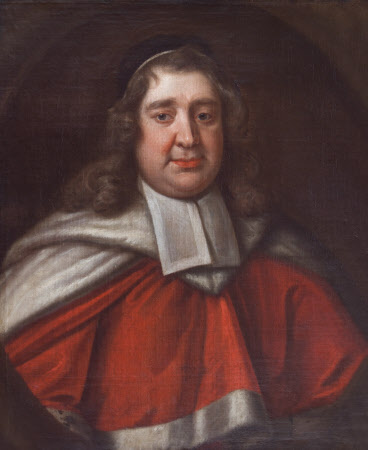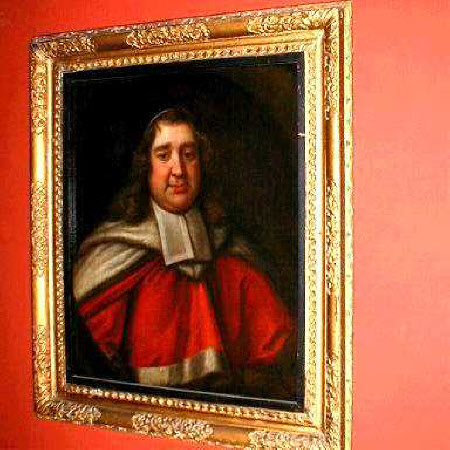Chief Justice Sir Thomas Jones (1614-1692)
after William Wolfgang Claret (d. London 1706)
Category
Art / Oil paintings
Date
1671 - 1692
Materials
Oil on canvas
Measurements
980 x 840 mm
Place of origin
England
Order this imageCollection
Belton House, Lincolnshire
NT 436133
Summary
Oil painting on canvas, Chief Justice Sir Thomas Jones (1614-1692), after Wolfgang William Claret (fl.1665 - d. London 1706). A painted oval half-length portrait of a portly man wearing the scarlet and white robes of a judge. Sir Thomas Jones KS (13 October 1614 – 31 May 1692) was an English judge and politician, who sat in the House of Commons from 1660 to 1676. He was the second son of Edward Jones of Sandford, Shropshire and Mary Powell, daughter of Robert Powell of Whittington Park, Shropshire. He was educated at Shrewsbury School before being admitted to Emmanuel College, Cambridge, as a pensioner on 9 May 1629. On 6 May of the same year he became a student of Lincoln's Inn, and was called to the bar on 17 March 1634, two years after finishing his Bachelor of Arts degree. He married Jane Bavand, daughter of Daniel Bavand of Chester, around 1640, and they had five sons and six daughters. He was for Shrewsbury in the 1660 Convention parliament. He was also Town Clerk of 1660-1662. In 1671 he was made Chief Justice of the North Wales circuit, promoted to King's Serjeant and knighted on 26 October. In 1681 and 1683 he helped try the conspirators in the Popish Plot, and appears to have initially believed Titus Oates and other informers before changing his mind. On 29 September 1683 he succeeded Francis Pemberton as Chief Justice of the Common Pleas. As a judge, he was known for harshness in the cause of the Crown, yet in 1686 he was dismissed for refusing to declare in favour of the royal dispensing power. In 1689 he and Pemberton were committed to custody by Parliament for a breach of privilege in the previous two reigns, but were released when Parliament was prorogued. He returned home to Carreghofa, where he died on 31 May 1692. No judges found in Cust Records Vol 2. This portrait was anonymous, until its identified fellow was lit upon. The attribution to Claret is speculative, but is based on the sub-Lelyish character of the picture, together with the fact that Claret seems to have had something of a clientèle amongst the judiciary, and that the sitter could well have gone back to him to be painted when he became Chief Justice, having been painted by Claret earlier in his career (possibly when he became King's Serjeant in 1671). Why the picture should be at Belton is not yet apparent: it seems most likely that the sitter was an Egerton connection - the more so in that, amongst Claret's few identified portraits, are two of the 2nd Earl of Bridgewater (Tatton Park & Christie's, 3 February 1961).
Credit line
Belton House, The Brownlow Collection (acquired with the help of the National Heritage Memorial Fund by the National Trust in 1984)
Makers and roles
after William Wolfgang Claret (d. London 1706), artist

